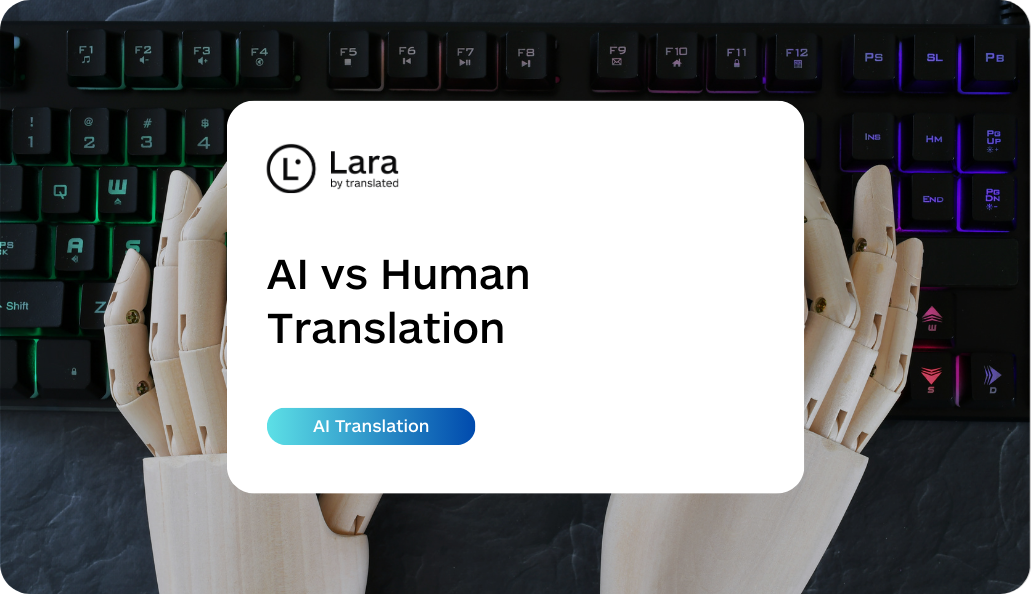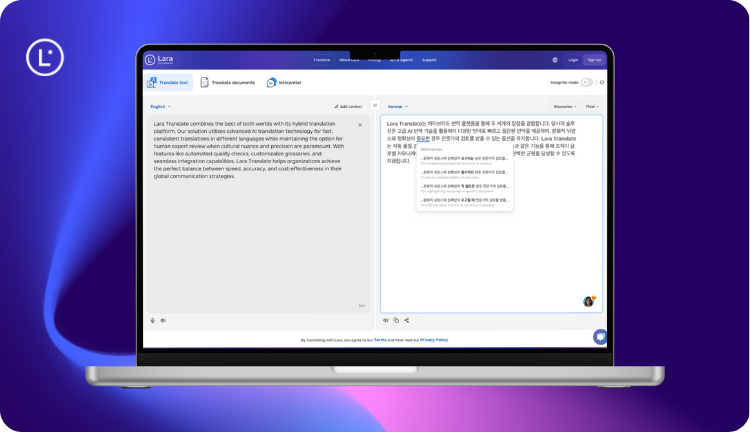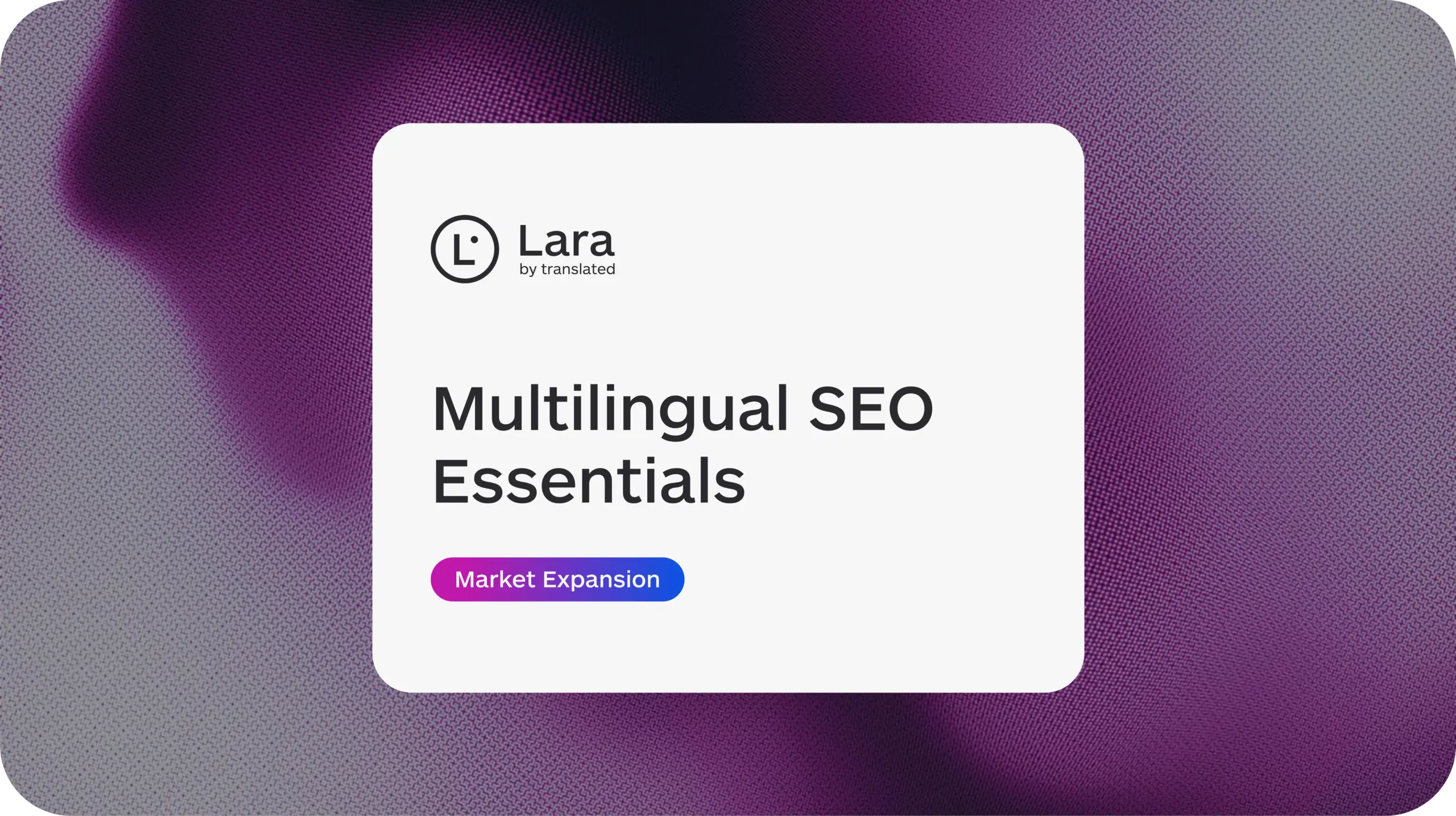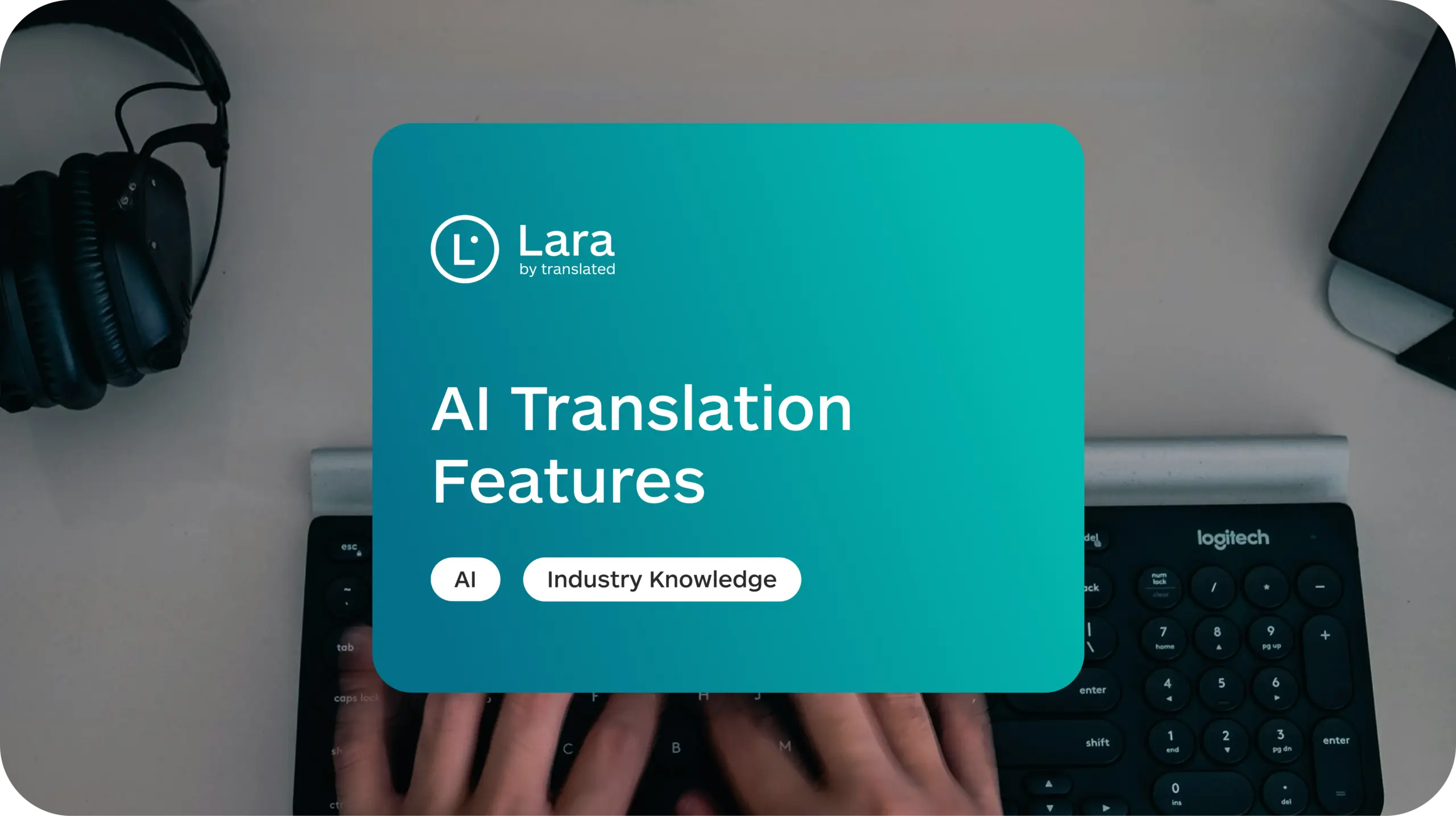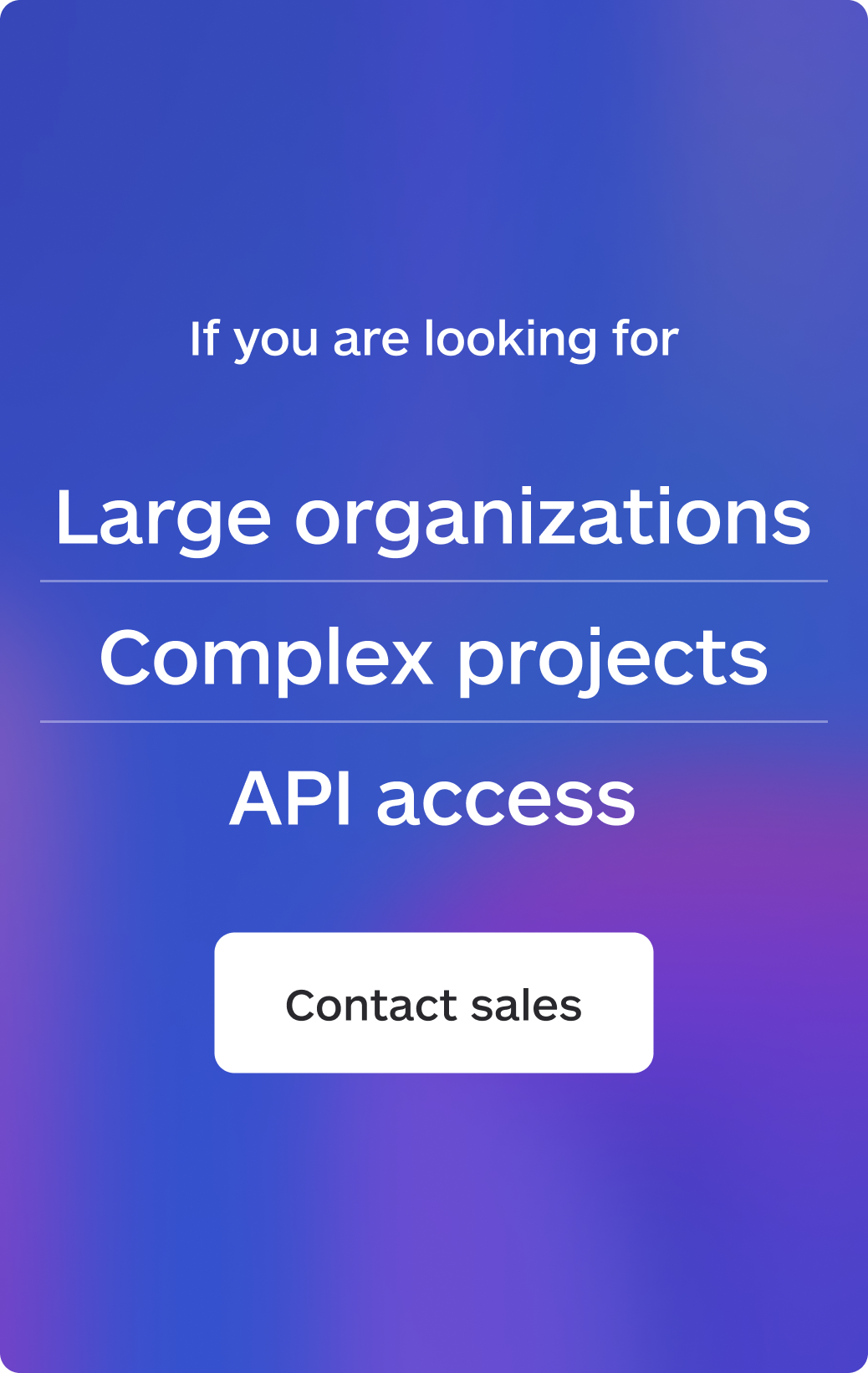Have you ever wondered if AI translation is accurate enough for your business needs, or if you should still invest in human translators? You’re not alone. As businesses expand globally, this question becomes increasingly important, and organizations face a critical decision: whether to compare AI and human translators for their translation needs. With 44% of businesses planning to use AI for content creation in other languages according to a recent Forbes study, understanding this distinction is more important than ever. This article explores when to choose AI vs. human translation, helping you determine the best approach for your specific needs while examining when Lara Translate’s AI-powered solution can optimize your translation strategy.
Compare AI and human translators: the evolution of translation technology

The translation industry has undergone remarkable transformation with the rise of artificial intelligence. Modern machine translation systems, particularly Neural Machine Translation (NMT), now process context, cultural nuances, and complex linguistic structures with increasing sophistication. These systems utilize deep learning algorithms to understand language patterns and deliver natural-sounding translations that continue to improve over time. However, this technological advancement hasn’t eliminated the need for human translators—instead, it has complemented their expertise, creating new opportunities for hybrid approaches that leverage the strengths of both machine vs manual translation methods.
Speed vs quality in translation: AI’s primary advantage
AI translation systems excel in processing large volumes of content rapidly and consistently. A typical AI translation platform can process thousands of words in seconds, operating 24/7 without scheduling constraints or time zone limitations. This speed vs quality in translation advantage becomes particularly valuable in:
- Real-time customer support interactions
- E-commerce product listings across multiple languages
- Technical documentation with standardized terminology
- Time-sensitive business communications
A recent study showed that AI translation can achieve 90%+ accuracy in straightforward, factual content, making it increasingly viable for many business applications. The cost-effectiveness of AI translation at scale further enhances its appeal, particularly for organizations handling high-volume, routine translation needs.
Language nuance and context: human translators’ expertise
Human translators maintain significant advantages in areas requiring cultural sensitivity and creative interpretation. Their deep understanding of cultural contexts enables them to accurately interpret idioms, jokes, and cultural references that AI systems often miss or misinterpret. This language nuance and context expertise extends to:
- Capturing emotional intelligence in translations
- Preserving intended tone and sentiment precisely
- Adapting marketing messages for local audiences
- Handling specialized terminology in law, medicine, or finance
Recent comparative studies specifically highlight that legal documents translated by humans achieve 95-98% accuracy with proper contextual understanding. In contrast, AI systems sometimes miss critical nuances that can have serious consequences, particularly in fields requiring subject matter expertise.
Human vs machine translation benefits: the financial perspective
The financial implications of choosing between AI translation or human translation can be substantial. Professional human translations typically range from $0.08 to $0.25 per word, with larger projects requiring project management overhead and extended processing times. For example:
- A 10,000-word website might cost $2,500 and take a week through human translators
- The same project could cost approximately less than $50 with AI translation through platforms like Lara Translate with immediate results
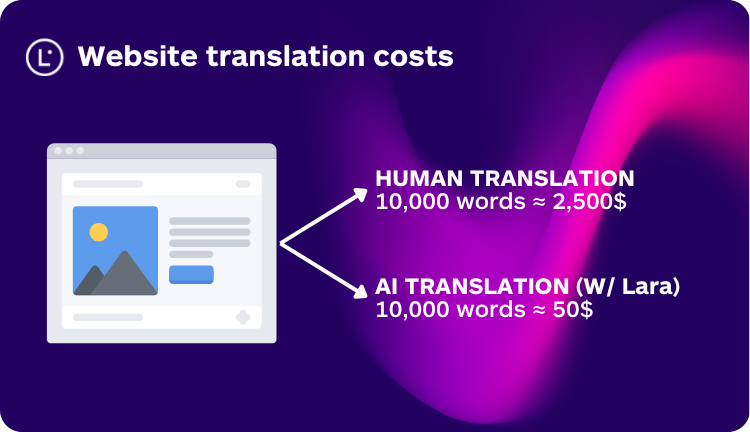
Accuracy differences in AI and human translation
Both AI and human translation methods face unique challenges in achieving perfect accuracy. AI translation systems can struggle with:
- Ambiguous phrases requiring cultural context
- Industry-specific jargon in emerging fields
- Emotional subtext of communication
- Creative content requiring cultural adaptation
Human translators, while generally more accurate with contextual understanding, aren’t immune to errors. Factors such as fatigue, tight deadlines, and complex subject matter can impact translation quality. The human element brings both the advantage of contextual understanding and the risk of subjective interpretation or occasional oversight.
When to choose AI over human translators
Choosing between translation tools vs experts requires careful consideration of multiple factors. Content type and sensitivity play a crucial role in this decision:
- Legal documents and medical texts demand human expertise
- Routine business communications often work well with AI solutions
- High-volume, recurring content benefits from AI efficiency
- Critical business communications need human oversight
Quality requirements must align with the chosen method. Budget constraints and time sensitivity round out the key considerations, with organizations needing to balance quality requirements against available resources and deadlines.
How to combine AI and human translation
The most successful translation strategies increasingly employ collaborative translation models that combine AI efficiency with human expertise. Organizations report using AI for initial translations and bulk content processing, then applying human review for critical refinements and cultural verification. This hybrid approach has grown by 60% as organizations discover it delivers the optimal balance of:
- Speed and efficiency
- Accuracy and cultural sensitivity
- Cost-effectiveness and quality assurance
- Scalability and consistency
Real examples of AI vs human translations
Your translation strategy should align with specific business objectives and content requirements:
- E-commerce businesses: Use rapid AI translation for product listings while reserving human translators for marketing campaigns requiring specific adaptations
- Professional services: Utilize AI for routine correspondence while ensuring critical client communications receive human attention
- Content publishers: Leverage AI for high-volume content production with human oversight for editorial pieces
- Customer service: Deploy AI for real-time support with human translators for complex issues requiring empathy
This strategic allocation of resources ensures both efficiency and quality across different content types and business functions, with AI post-editing support bridging the gap between automated and human translation methods.
Lara Translate: bridging the AI-human translation gap
Lara Translate combines the best of both worlds with its hybrid translation platform. Our solution utilizes advanced AI translation technology for fast, consistent translations in different languages while maintaining the option for human expert review when cultural nuance and precision are paramount. With features like automated quality checks, customizable glossaries, and seamless integration capabilities, Lara Translate helps organizations achieve the perfect balance between speed, accuracy, and cost-effectiveness in their global communication strategies.
FAQ
How has AI translation accuracy improved in recent years?
AI translation accuracy has significantly advanced with Neural Machine Translation technology, achieving 90%+ accuracy for many language pairs in technical domains. However, human translators still maintain an edge with 95-98% accuracy in nuanced content.
What types of content are best suited for AI translation?
AI performs excellently with technical documentation, e-commerce product descriptions, routine business correspondence, and high-volume repetitive content that requires consistent terminology.
When should businesses prioritize human translation?
Human translation is essential for legal documents, medical content, marketing campaigns, literary works, and any content where cultural nuance and emotional tone are critical.
How can businesses calculate the ROI of AI translation?
Compare your monthly translation volume with AI pricing versus human rates. For instance, translating 10,000 words monthly could cost $150 with AI versus $2,500 with human translators, representing significant savings.
This article is about
- Understanding the distinct capabilities and limitations of AI vs human translation
- Identifying when to use AI translation versus when human expertise is essential
- Evaluating cost-effectiveness and accuracy considerations for different content types
- Exploring the benefits of hybrid translation approaches for optimal results
Useful articles
- What is Machine Translation: A Comprehensive Guide
- AI Translation Benefits
- Key Features of AI Translation: A Deep Dive into Modern Language Technology
